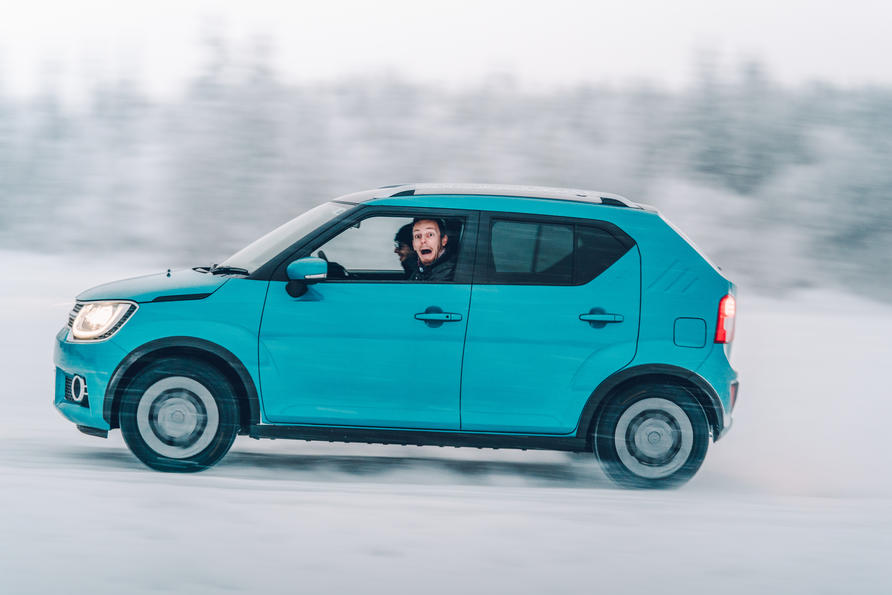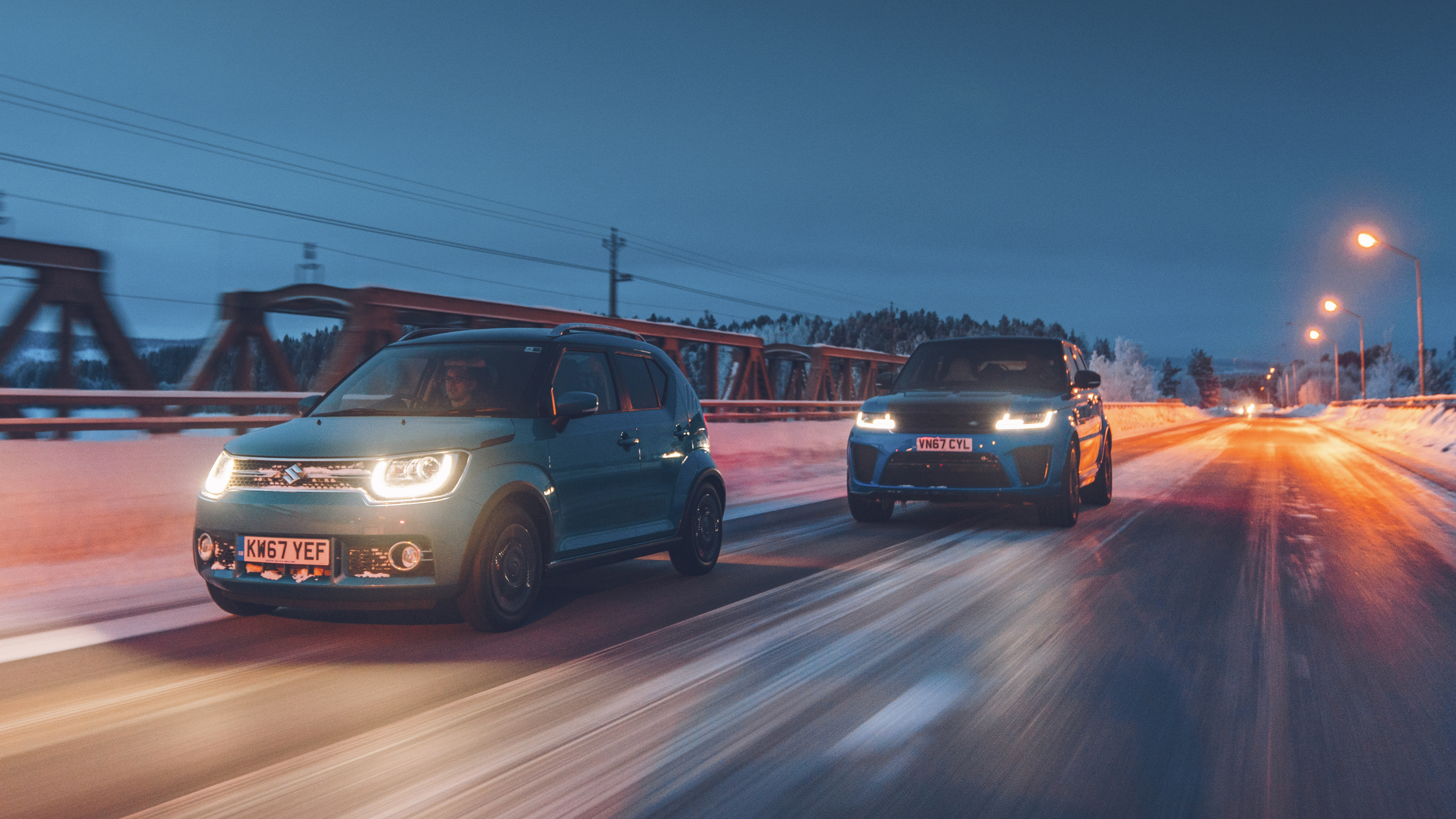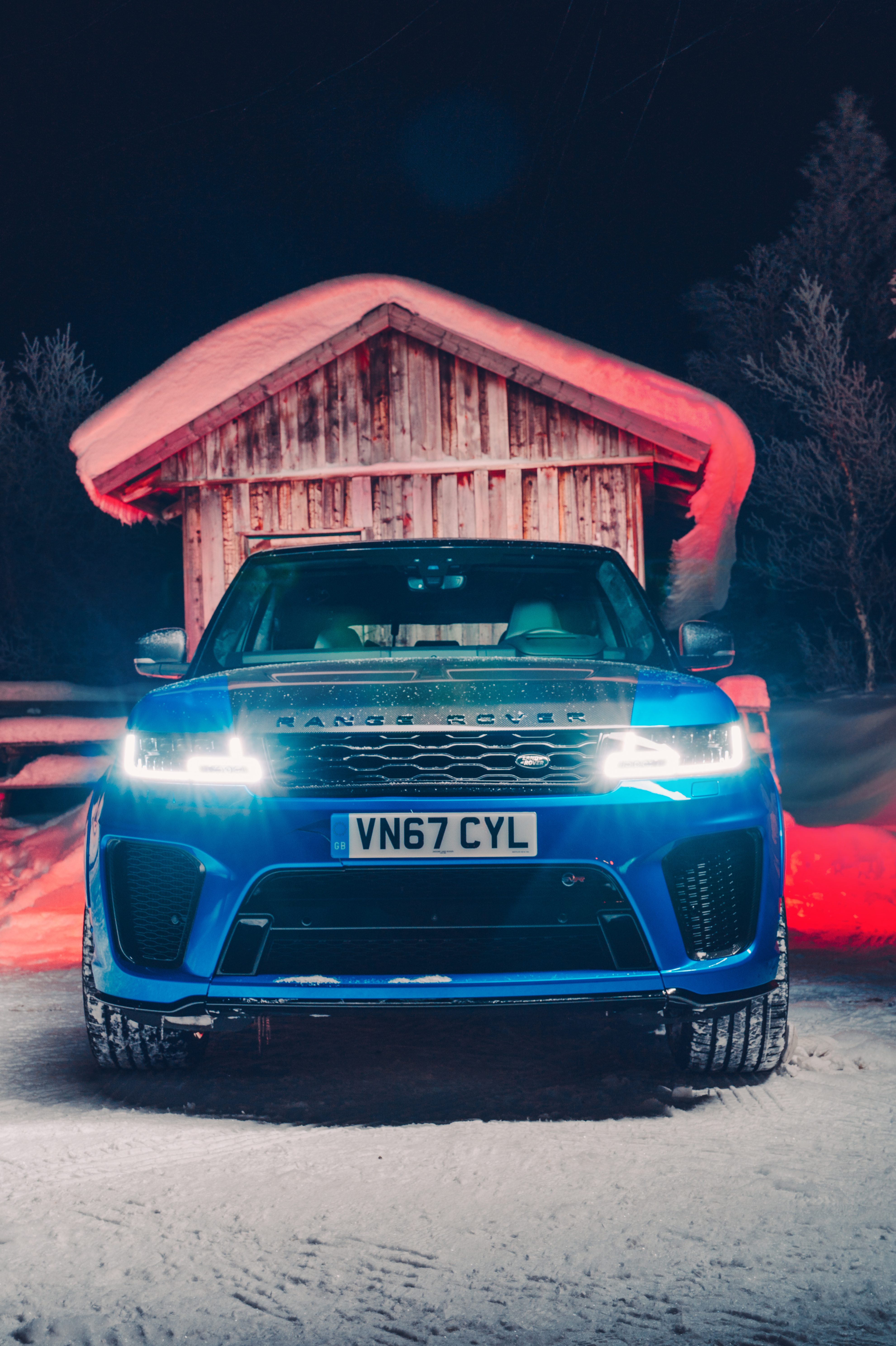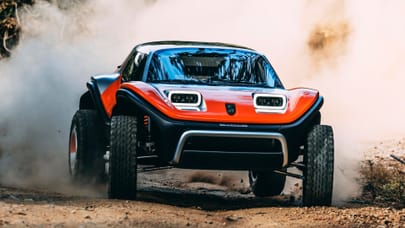
TG on ice: Range Rover Sport SVR vs Suzuki Ignis
Welcome to the Upside Down, where a plucky minnow can take on a beast twice its size
It’s not always easy being Goliath. Here you are, the top player, big, muscular and with form in the game. Powerful and proven. You shouldn’t even be challenged by a skinny kid swinging a sock with a rock in it, let alone struck down. But sometimes, those Davids can be really annoying.
In this case, we’ve got the best 4x4xFar versus a relatively pasty little hatch with AWD pretensions. A grizzly of a RRS taking on Suzuki’s Care Bear of an Ignis. This, one feels, will be bloody. But when it comes to properly low grip coefficients, what really wins – heavy, powerful and clever, or light, modest and simple?
Words: Tom Ford / Photography: Mark Riccioni
The stats very much emphasise the depth and breadth of the problem. The Range Rover in question is the new SVR-spec Sport, all 567bhp, 516lb ft of 5.0-litre supercharged V8 of it. It claws at the earth via 22in rims on standard all-season tyres, via an AWD transmission proved over thousands of miles of testing and terrain. There’s an 8spd Commandshift 2 ’box, complete with paddleshift, and a full suite of configurable dynamics (throttle maps, gearbox shift points, steering sensitivity and suspension presets), as well as the usual Land Rover Terrain Response 2 for tricky off-road situations. This version gets an active electronic rear diff with torque-vectoring (via braking, rather than active), which in turn comes equipped with a dynamic programme specifically for hardcore driving, the usual dynamic stability programmes, low-traction launch function, a 2spd transfer ’box and enough zeroes and ones whizzing about in its electronic brains to render it only a couple of points off beating a Turing test. It’s basically early-morning, pre-coffee AI.
You can’t miss it, either. Slathered with carbon, there’s precisely enough lightweight materials to suggest it might actually weigh less than a normal RRS, although it very much doesn’t. Carbon that includes a bonnet (largely hideous), side vents (which don’t actually have holes in them) and various other trim pieces. There’s a quad of rectangular “exhausts” in the rear valance that emit a really rather fantastic gravelly gargle, but as ever is the way, if you follow it at night, you see the less attractive real exhaust pipes hanging limply some way away from the shiny bits. And fast? On a dry road this 2310kg block of leathery automotive iconography will hit 176mph and 0–62mph in 4.3secs. It is not, to put it mildly, messing about.

Thing is, we’re not on a dry road. We’re not on a road. We’re on a lake. And this is literally where power is nothing without control. Which is where the Ignis comes in. Now this is about as far from the Rangie as it’s possible to be, psychologically and technologically. It looks like a Sylvanian Families minibus, all tippy-toed and cute, with the kind of blankly adorable face that makes you want to punch it. There is a nat-asp 88bhp 1.2-litre up front, driving the front wheels through a 5spd manual ’box, and a live rear axle. Yep, like an old Transit van. There is also, on this top-end model, a viscous coupling that transfers some power rearwards when the front slips, giving what Suzuki calls AllGrip, and one bit of tech on the car – the SHVS (Suzuki Hybrid Vehicle System) that helps with the anaemic power outputs. Basically, there’s a small battery under the passenger seat that provides 1.7bhp/36lb ft of torque if conditions are right. Suffice it to say, even with tyres a hands-width wide and a kerbweight of only 920kg, the rubber is not trembling.
You probably guessed the not-so-killer blow here, right? That the Suzuki scampers about on winter tyres like a caffeinated terrier, going faster than anyone thought possible, lift-off oversteering and generally impressing everyone who drove it? Faster than a couple of the supercars driven hard with systems off. Well, it did that. It’s absolutely brilliant on snow. Or ice. Or mud. As long as you show it an element of slight disrespect, it’ll clamber, skid and dementedly claw its way around pretty much everywhere, making you laugh while it does so. No, it’s not an off-roader, but it is quirky, and smiley and fun and... good.

But the surprise is that the Range Rover is too. It should be compromised here. It’s too big, too powerful, too techy. It benefitted from full winters, instead of the all-weather rubber every RRS gets delivered on, but Land Rover really knows its stuff when it comes to 4x4 systems – and it shows. Even with what felt like a decent rear-bias, the SVR maintained quite startling progress, bellowing like a wounded bull elephant as it tore around the ice lake. It throws torque around seamlessly, finds grip where there isn’t much, and generally makes mincemeat of situations you assume from the external bling might fox it. In fact, for all the general showy speed and look-at-me styling, there’s still a genuinely useful Land Rover product underneath. Just a really, really fast one. Which just goes to show that you can’t make glib assumptions based on looks. Or you might just get a rock in the eye.
Top Gear
Newsletter
Thank you for subscribing to our newsletter. Look out for your regular round-up of news, reviews and offers in your inbox.
Get all the latest news, reviews and exclusives, direct to your inbox.











